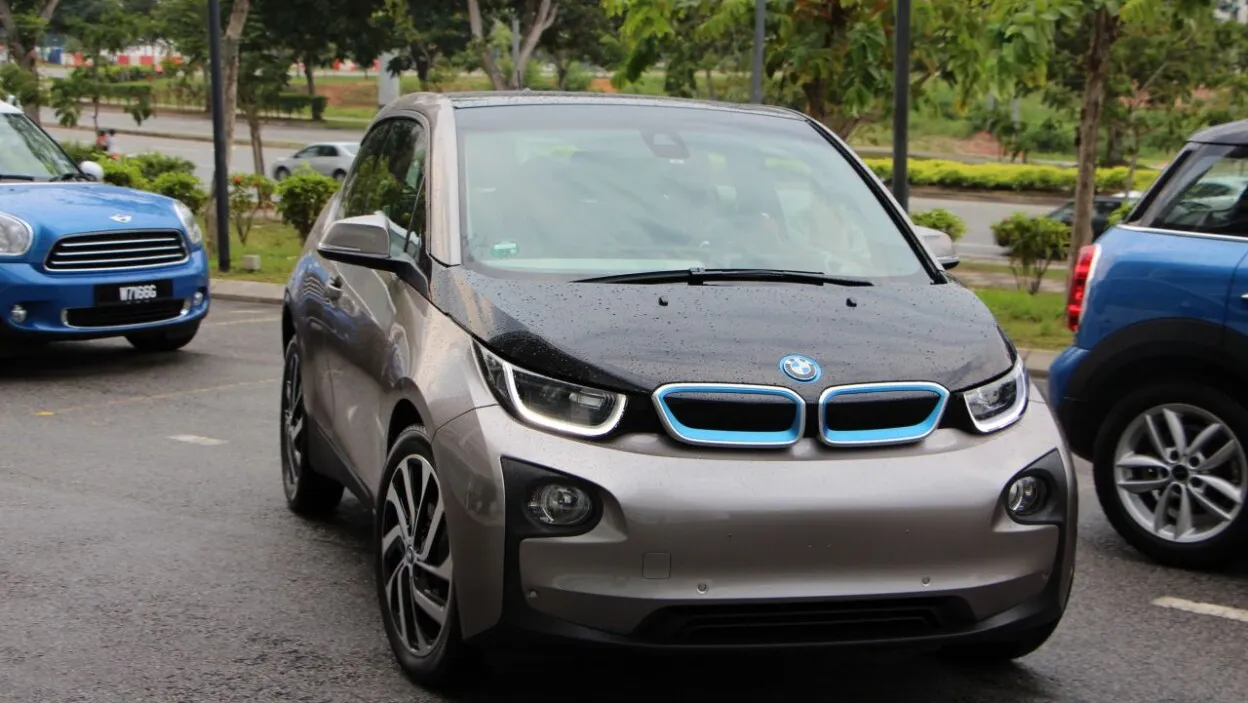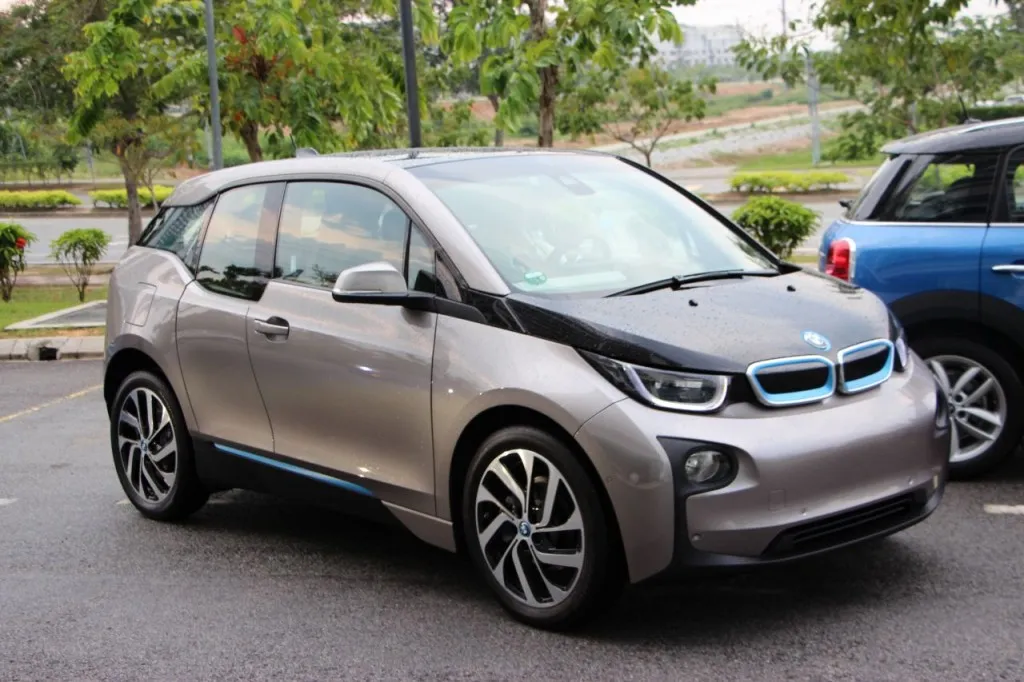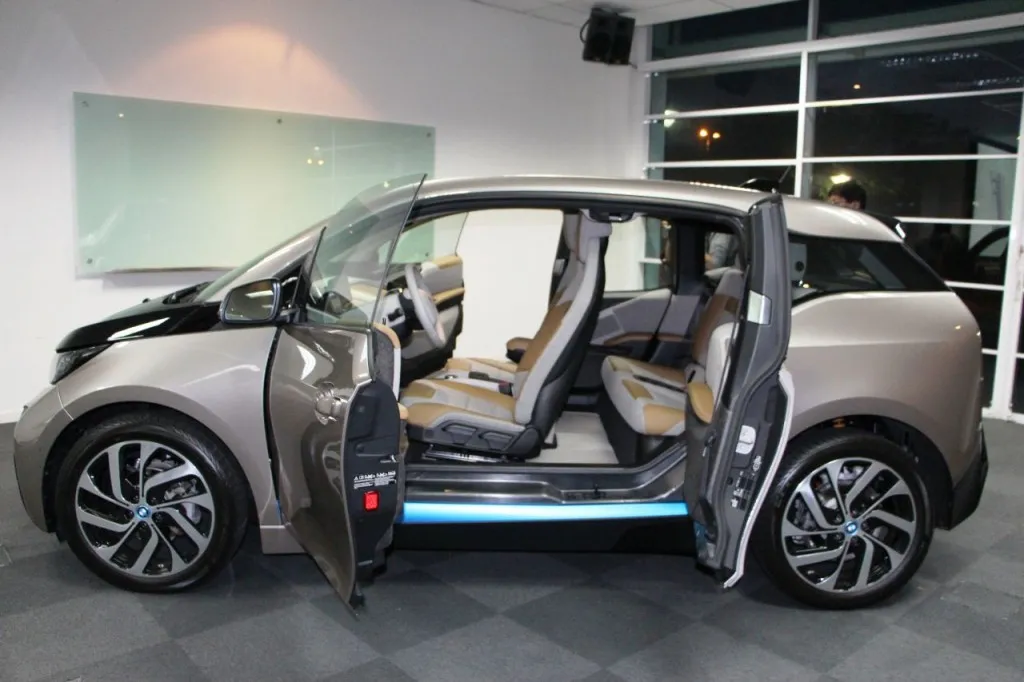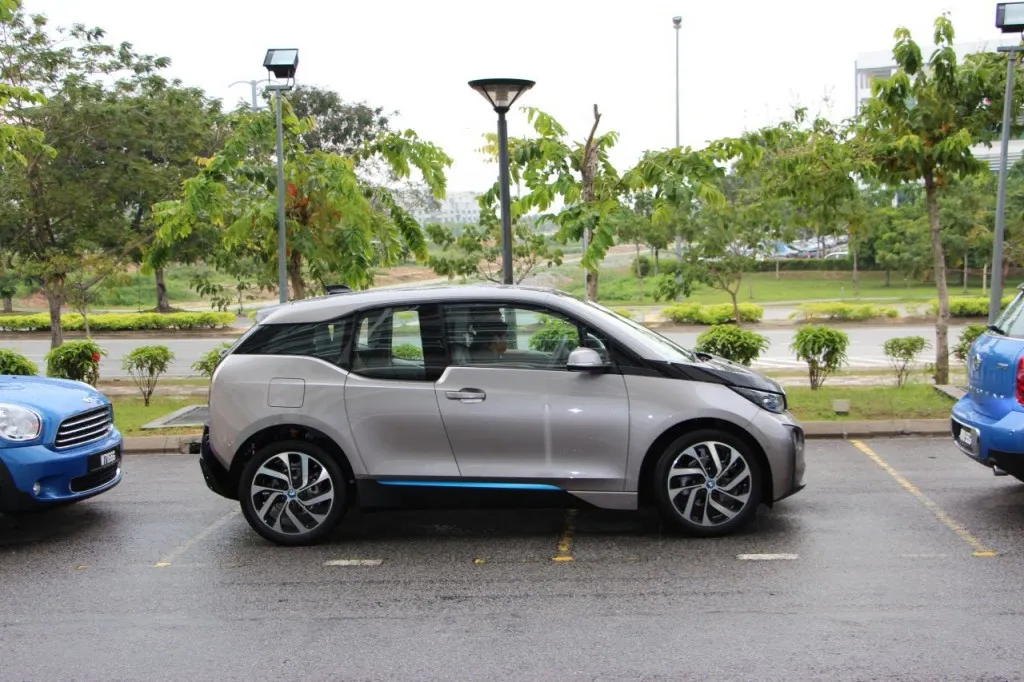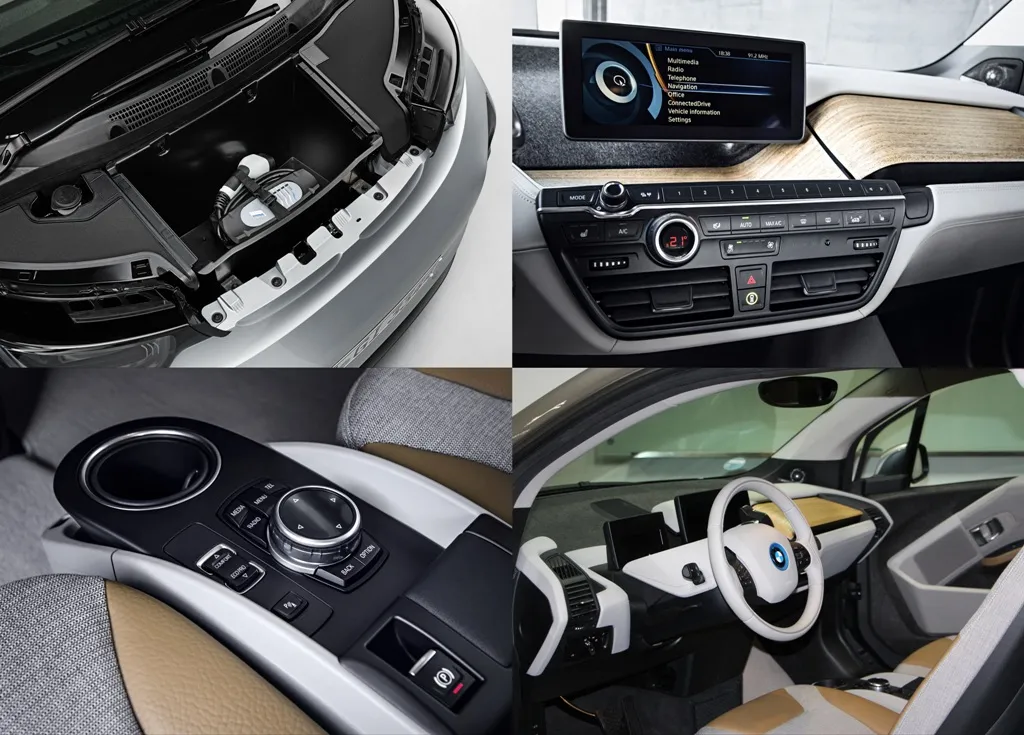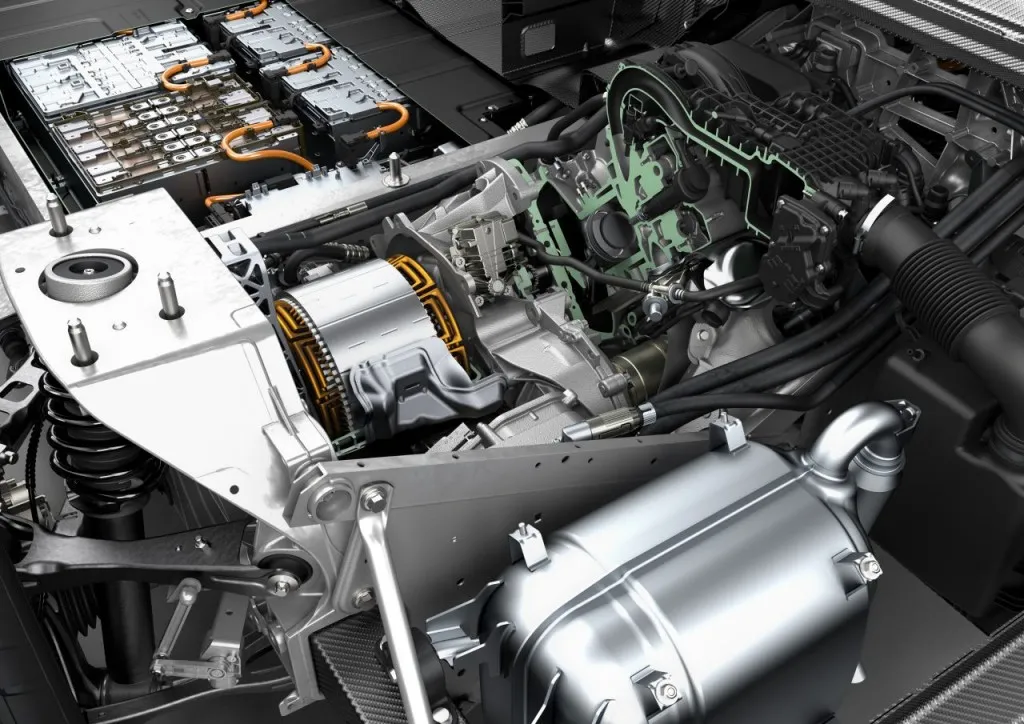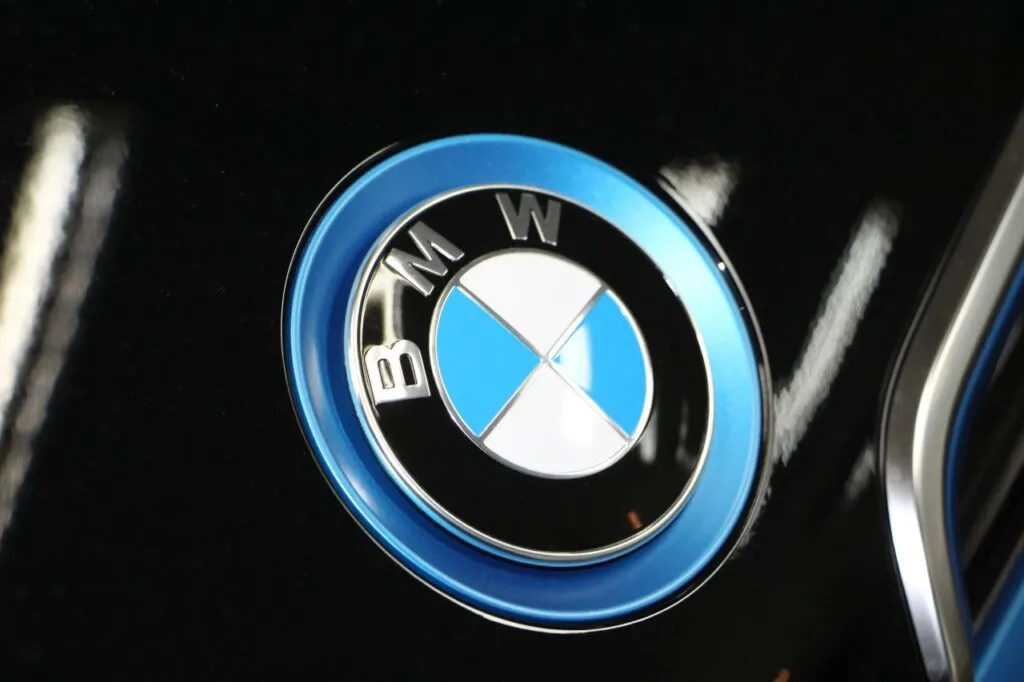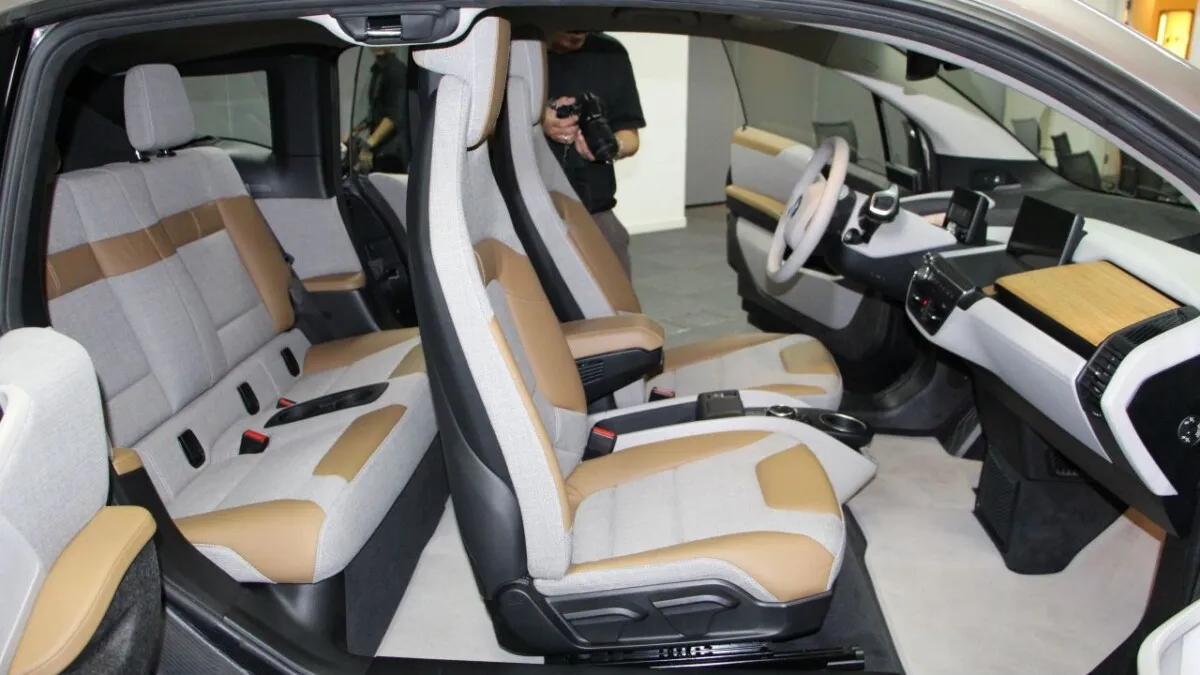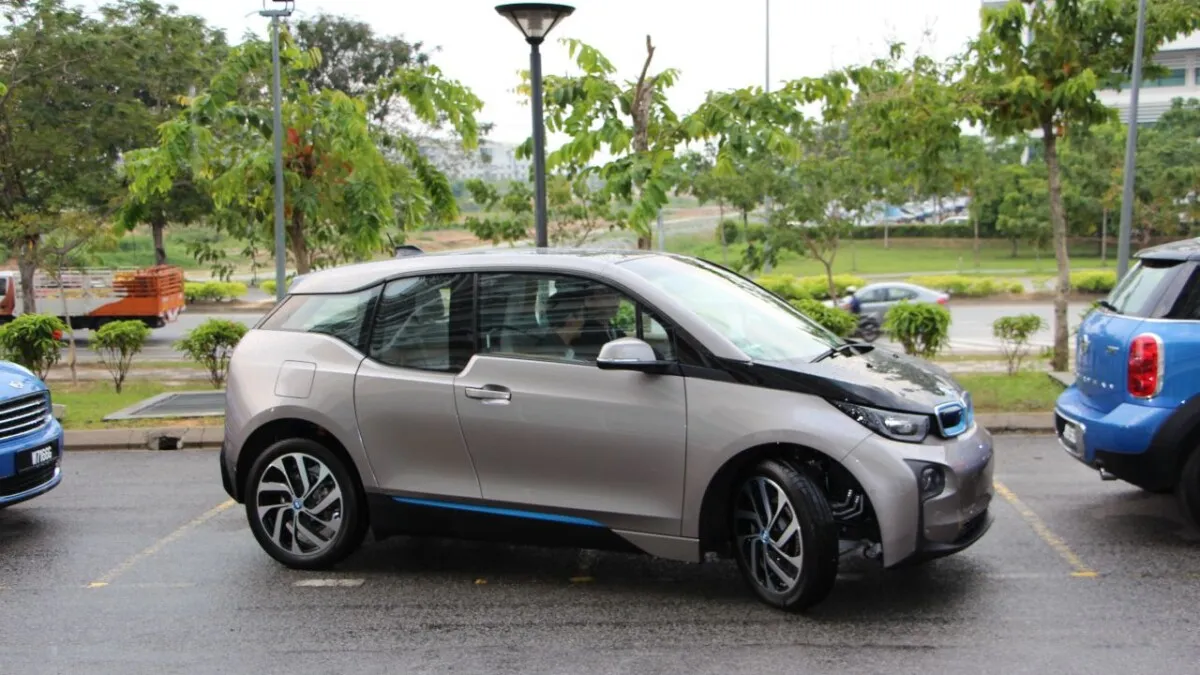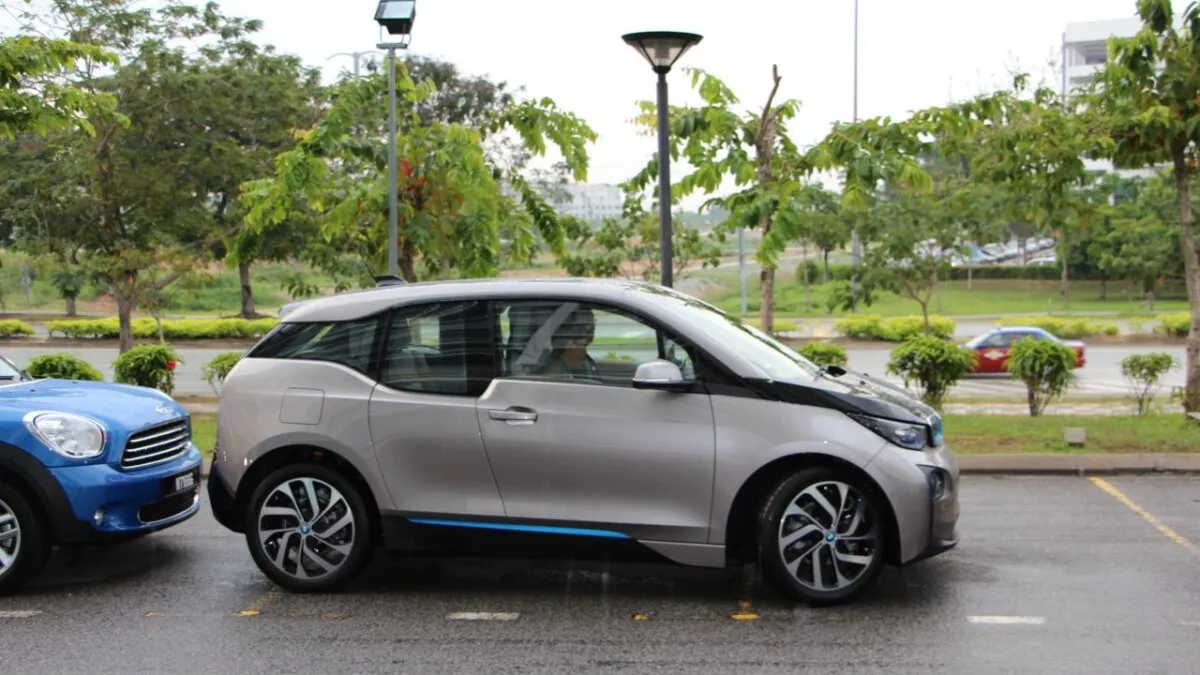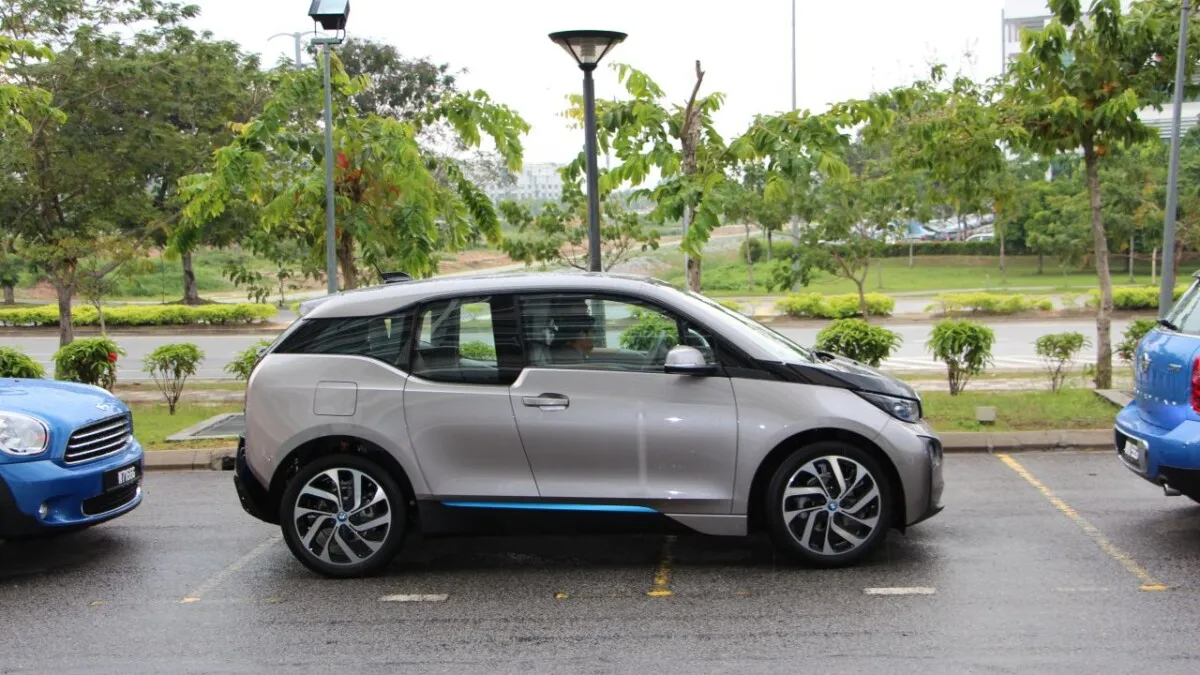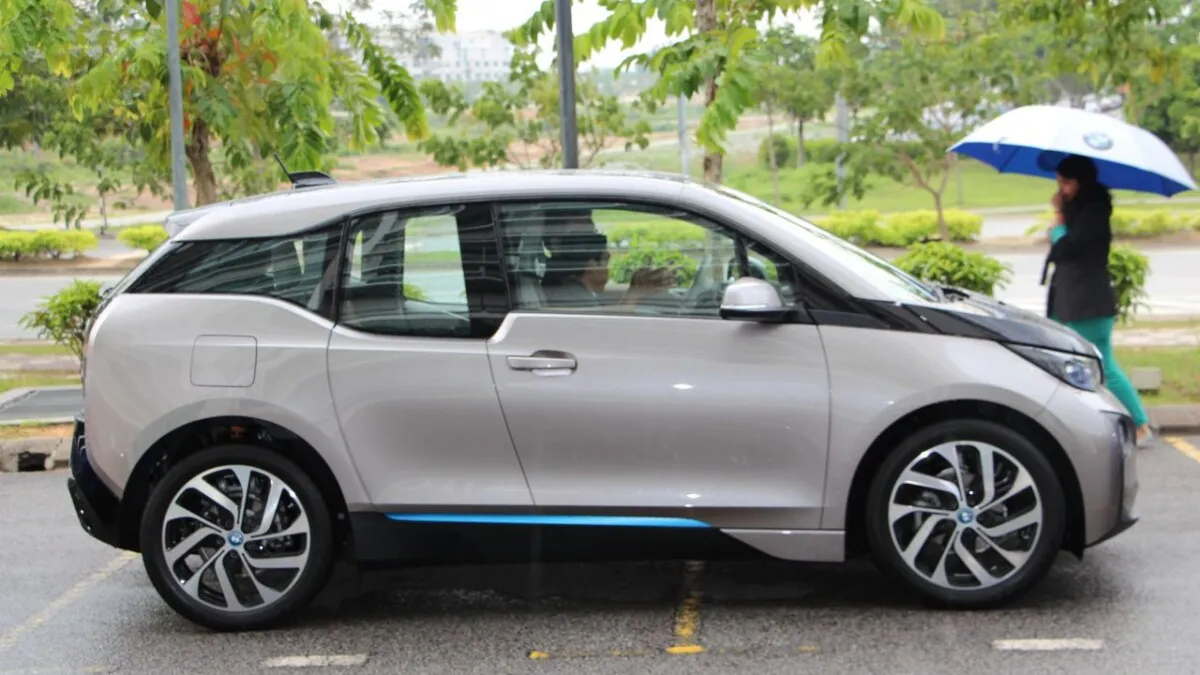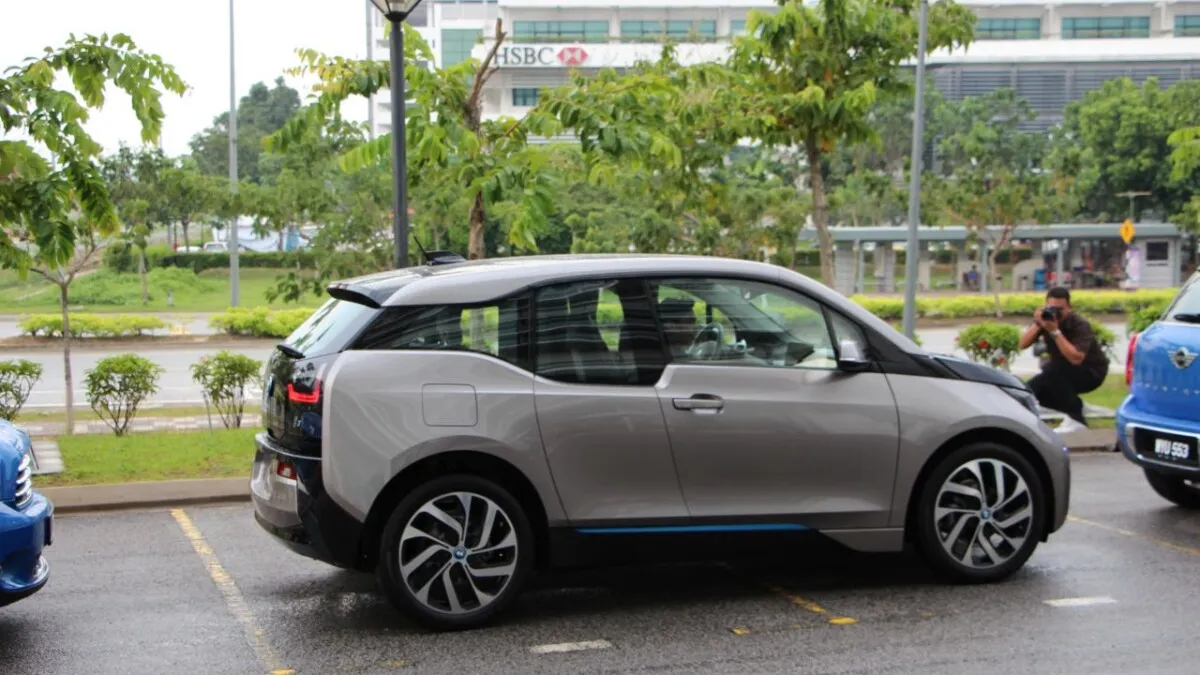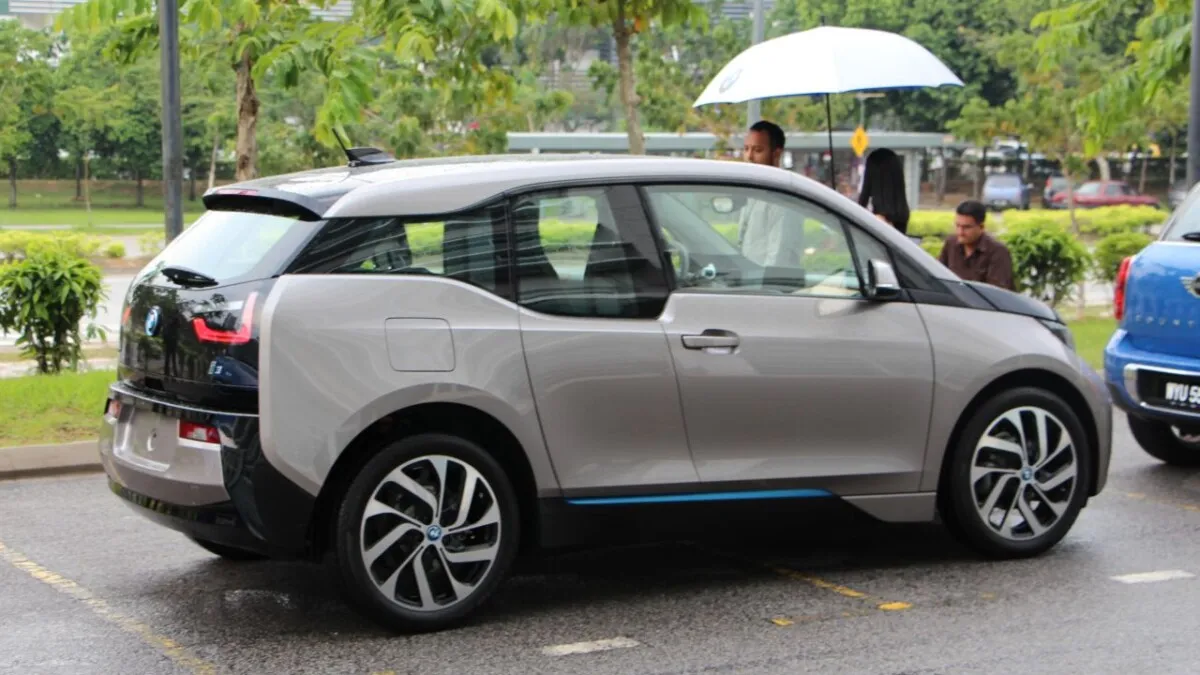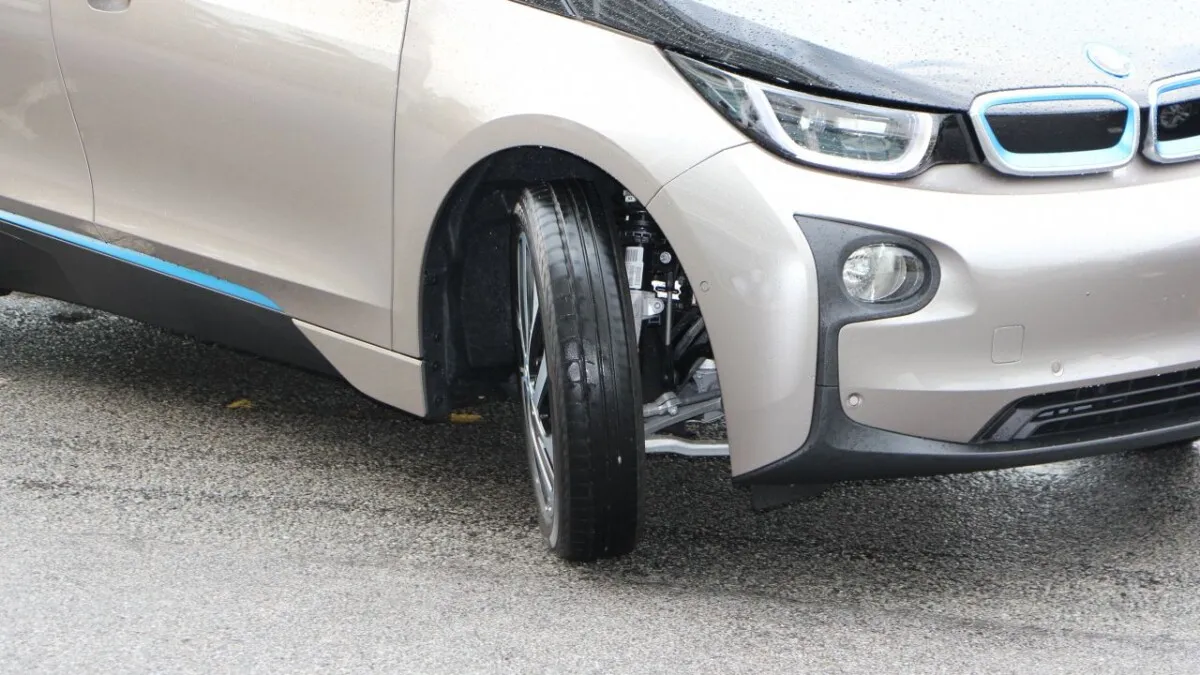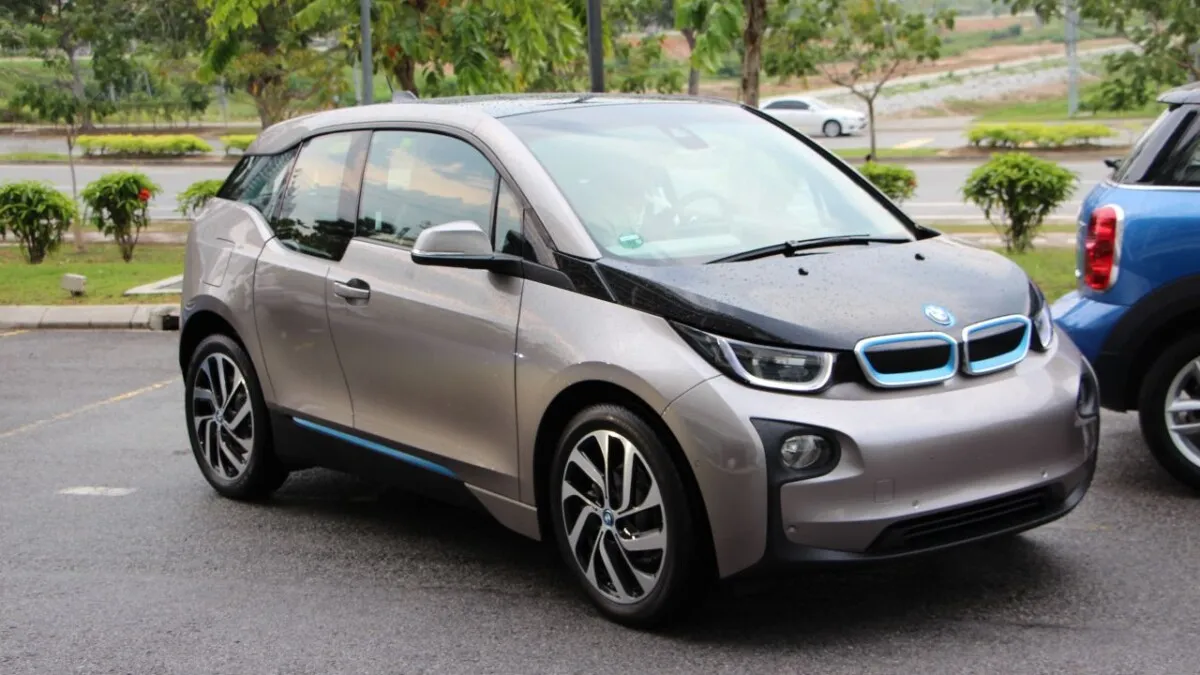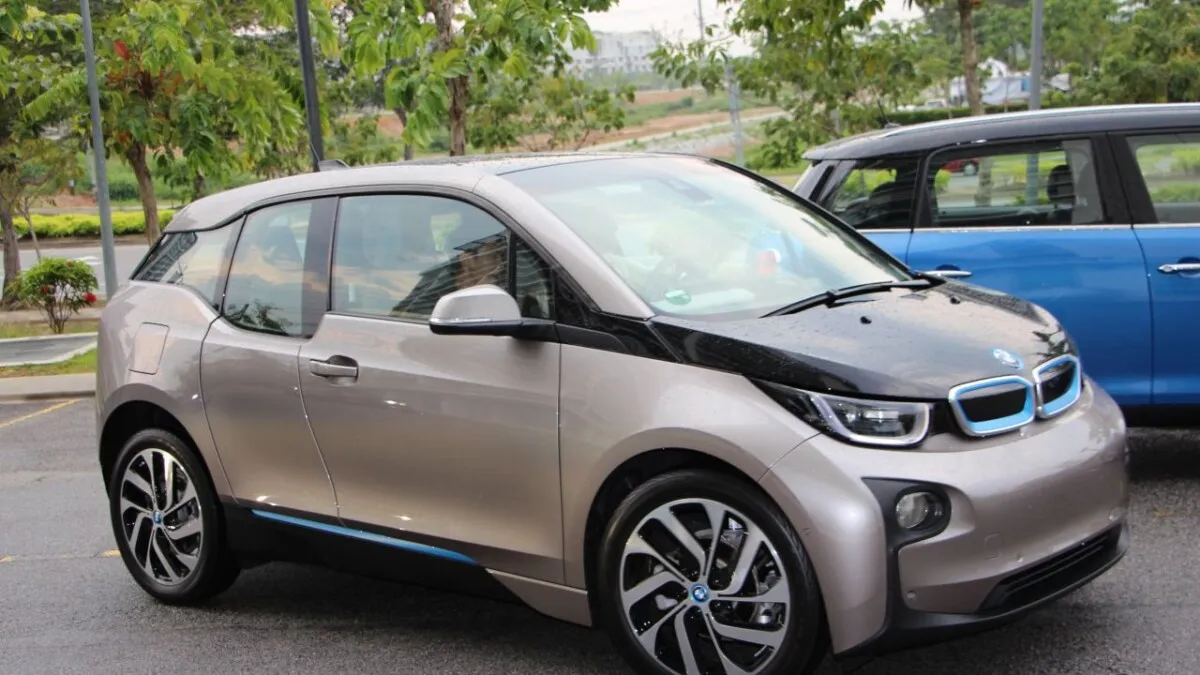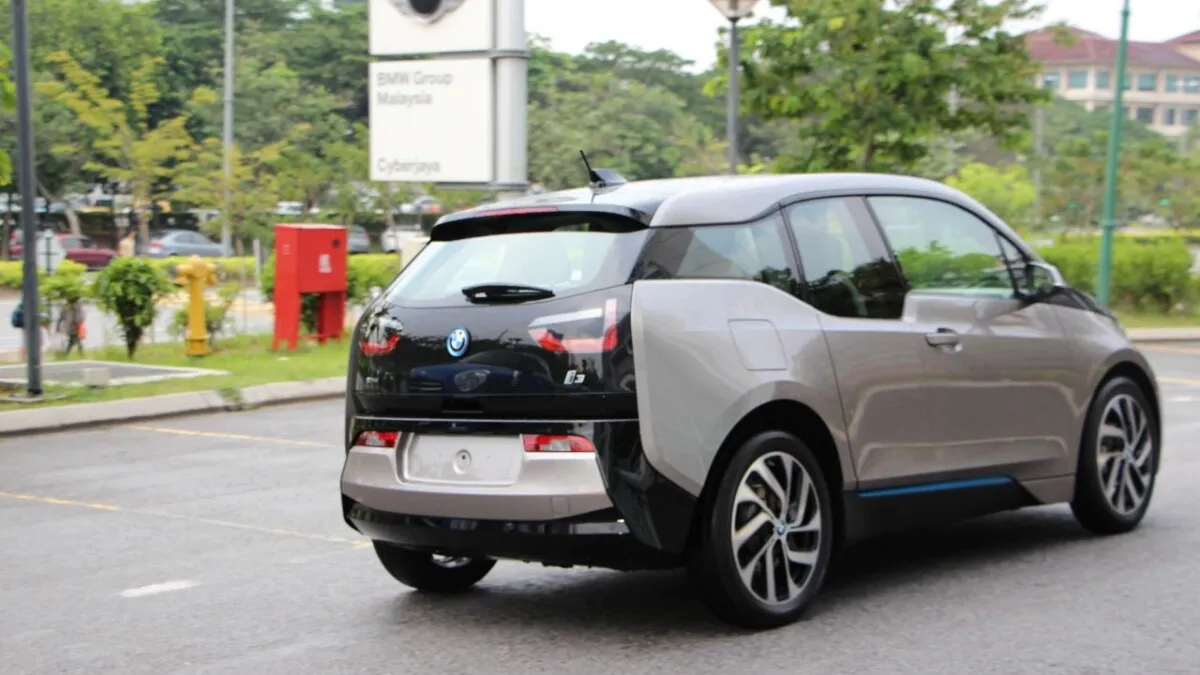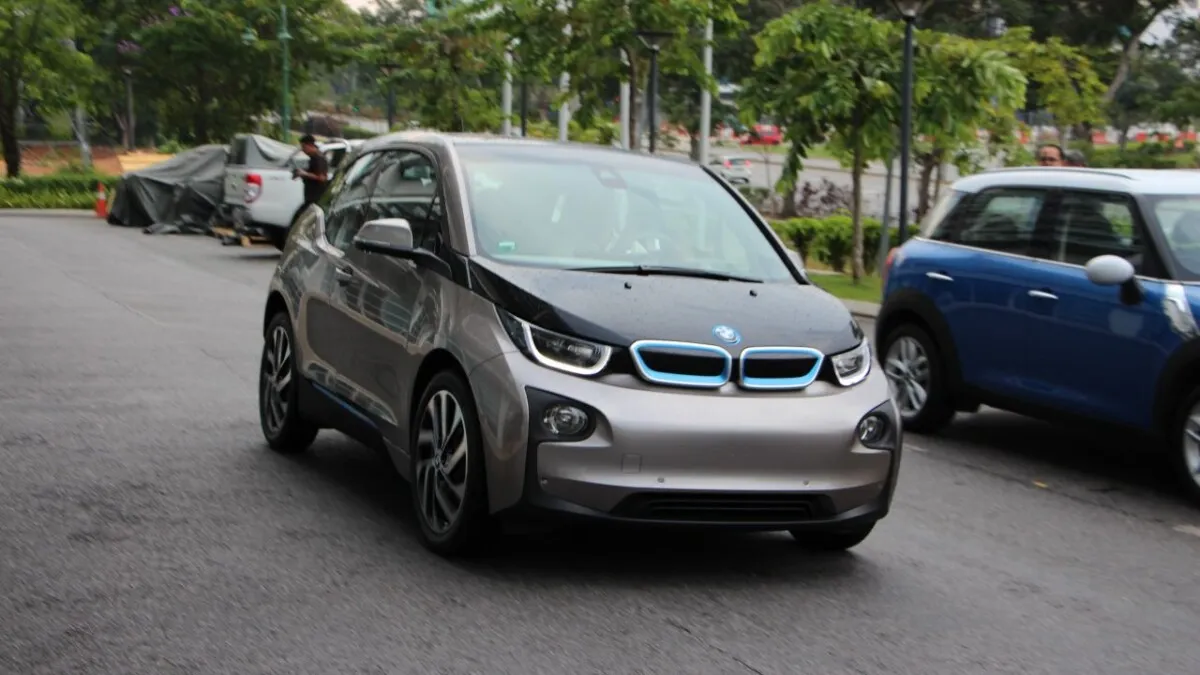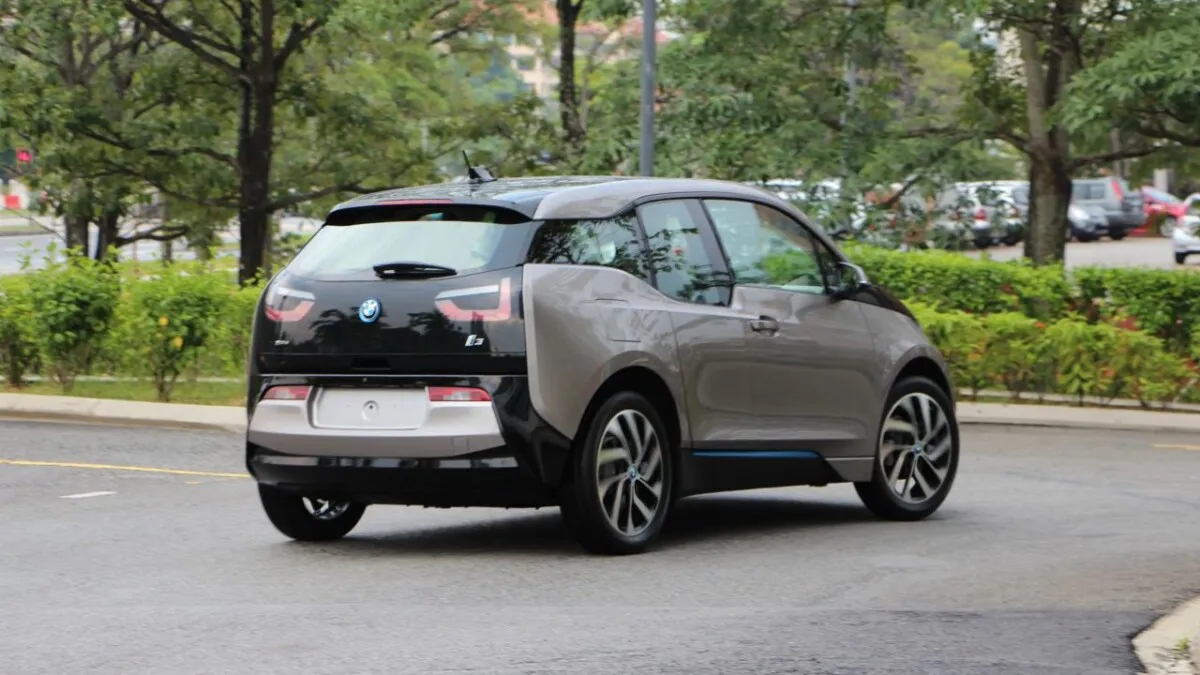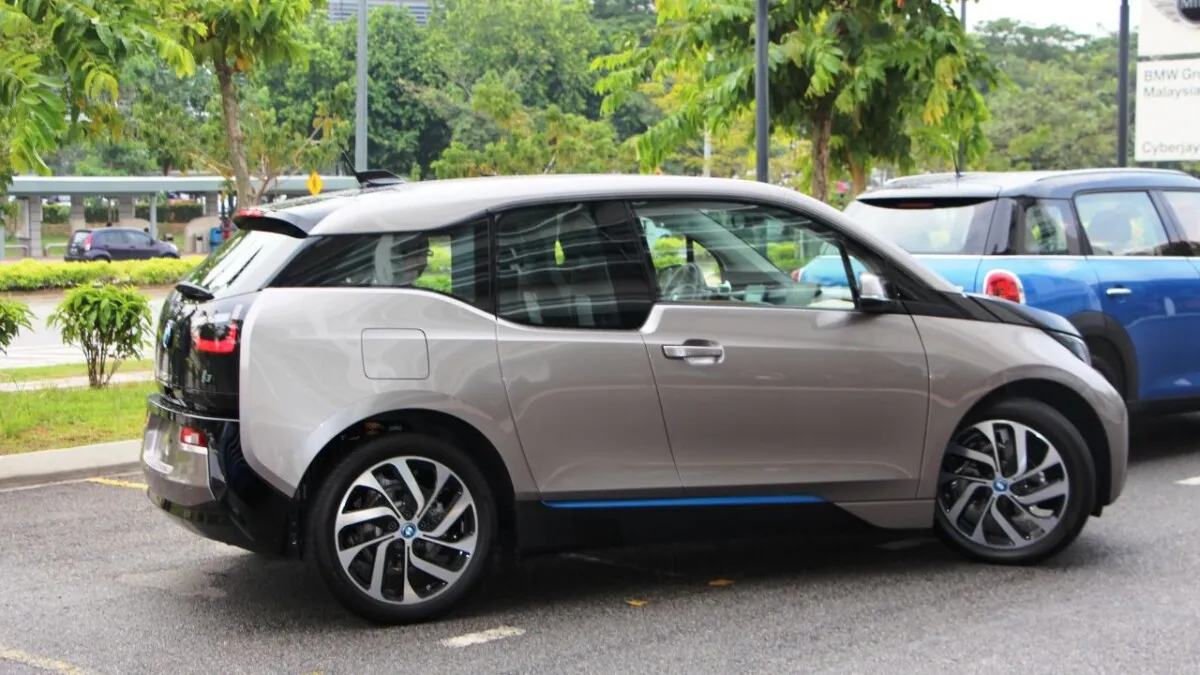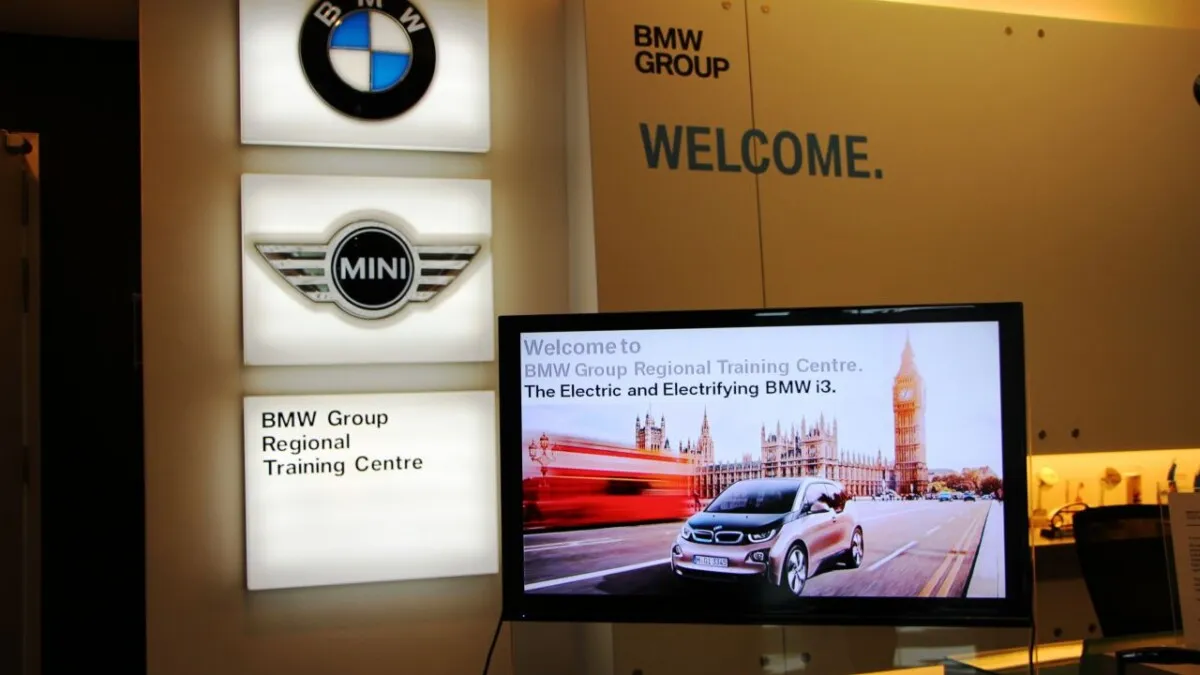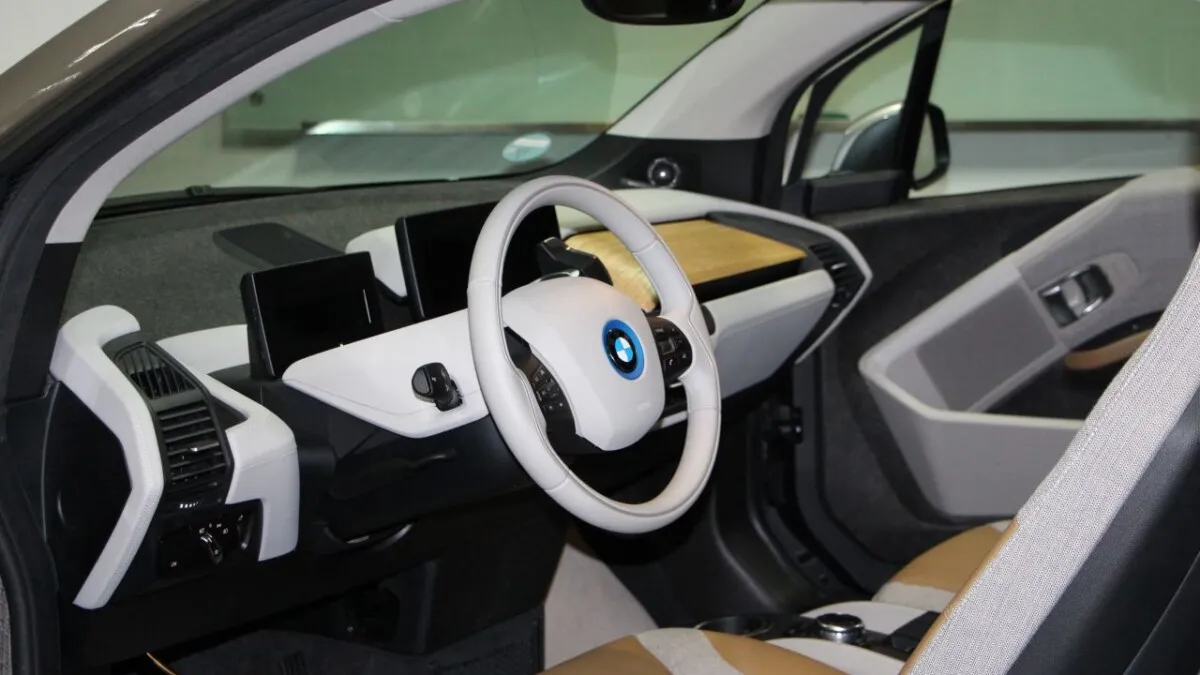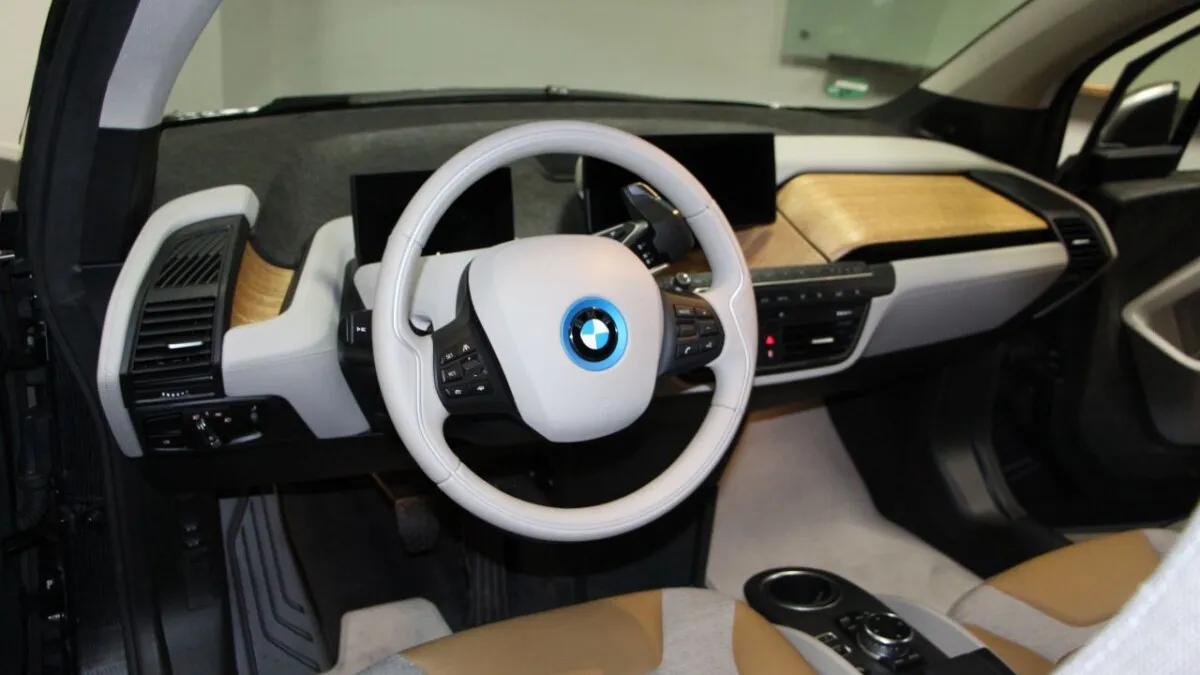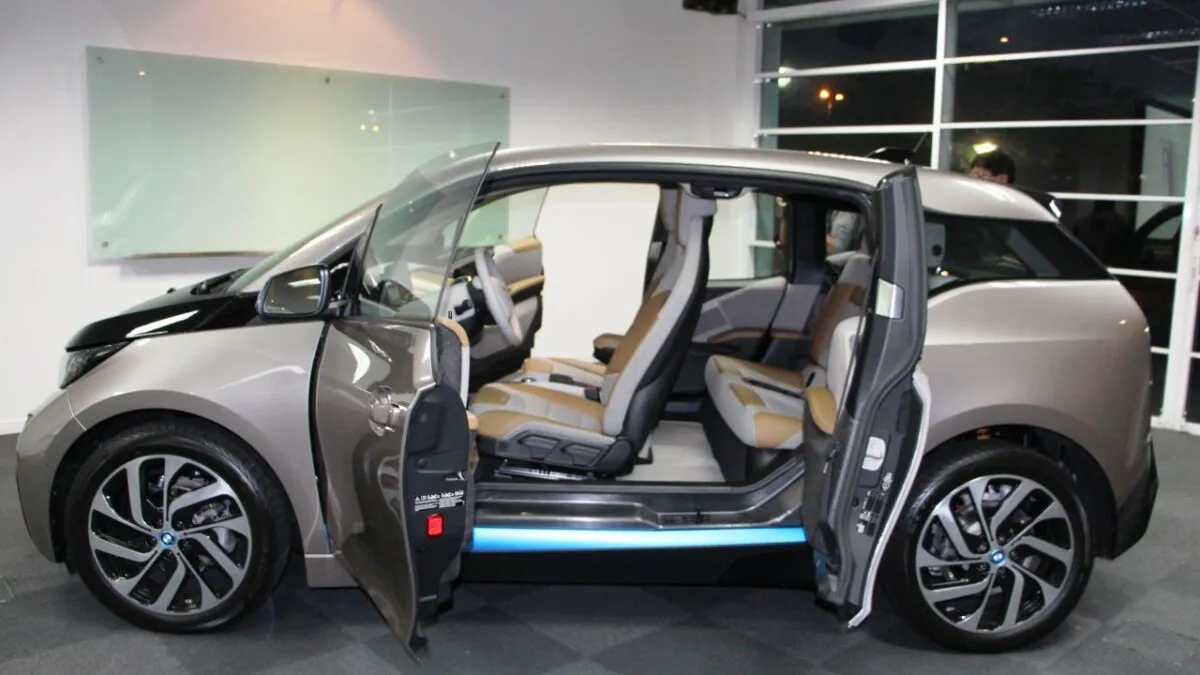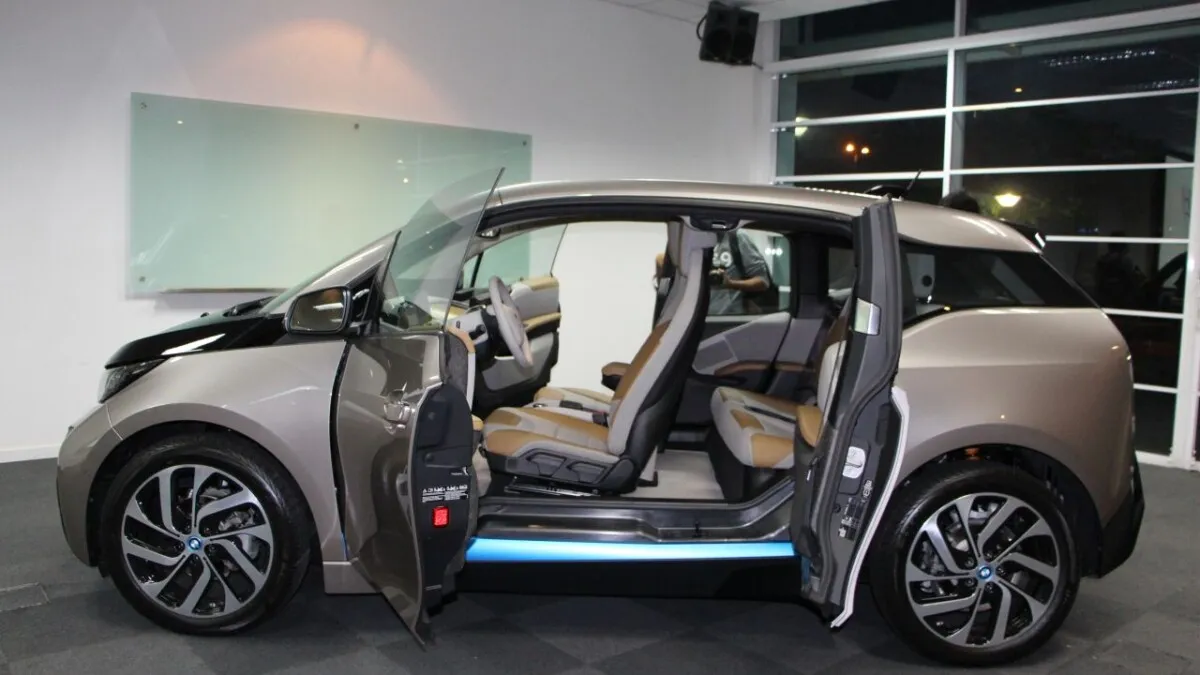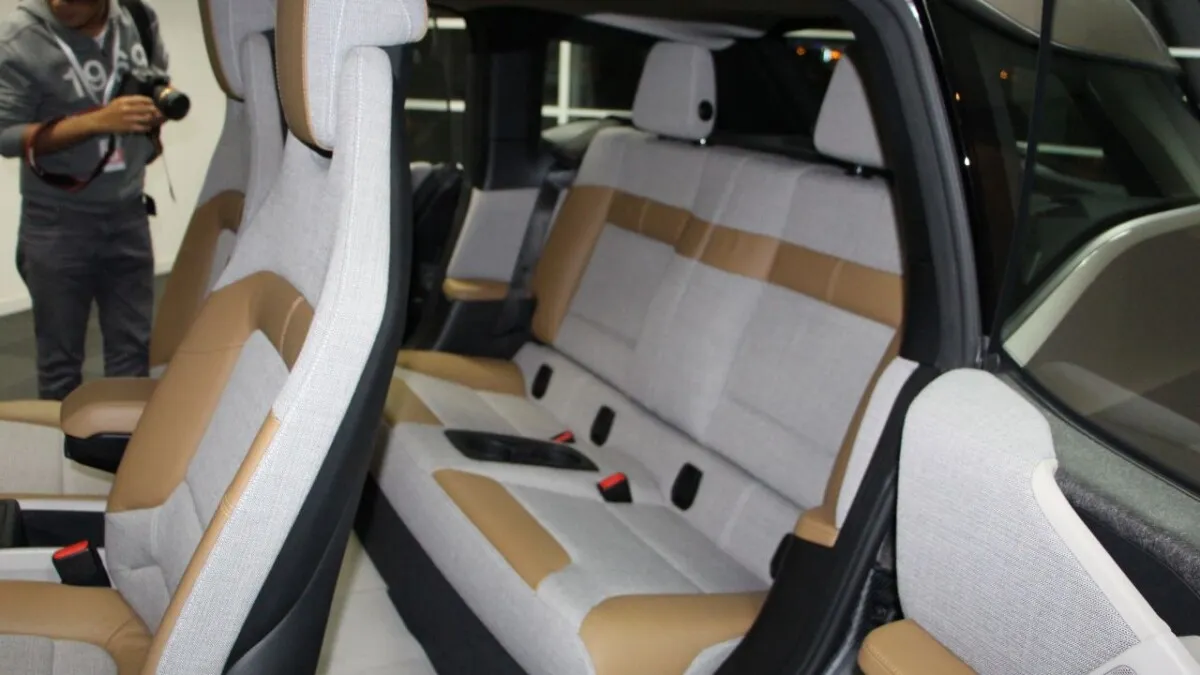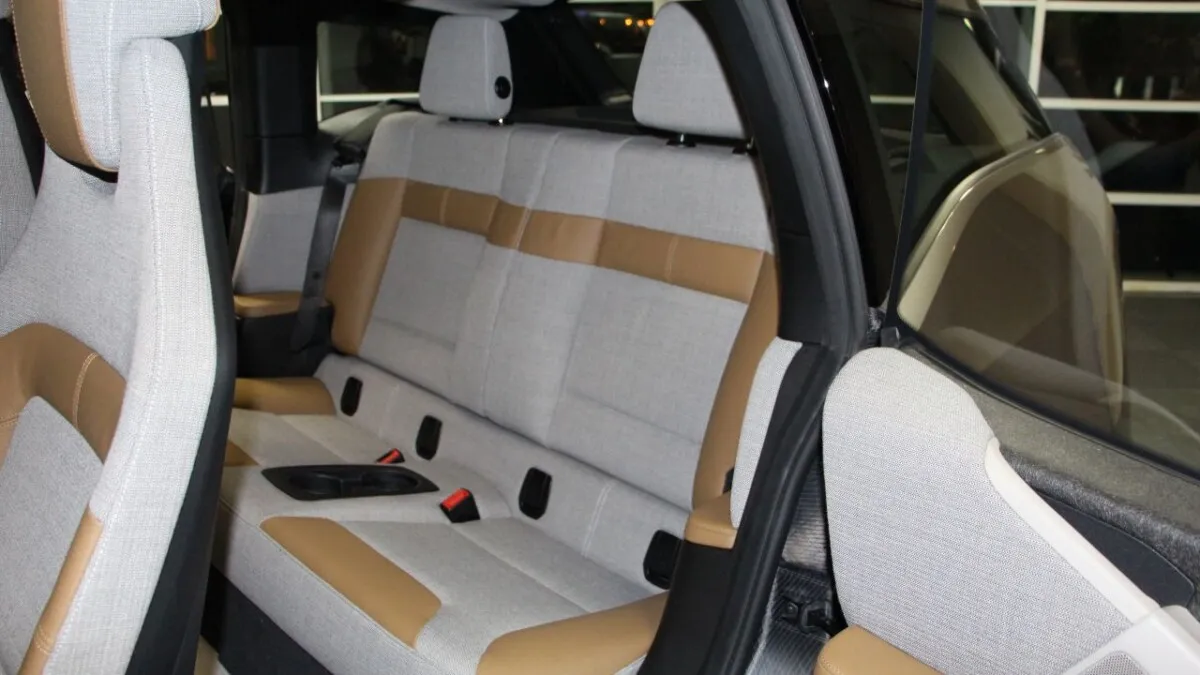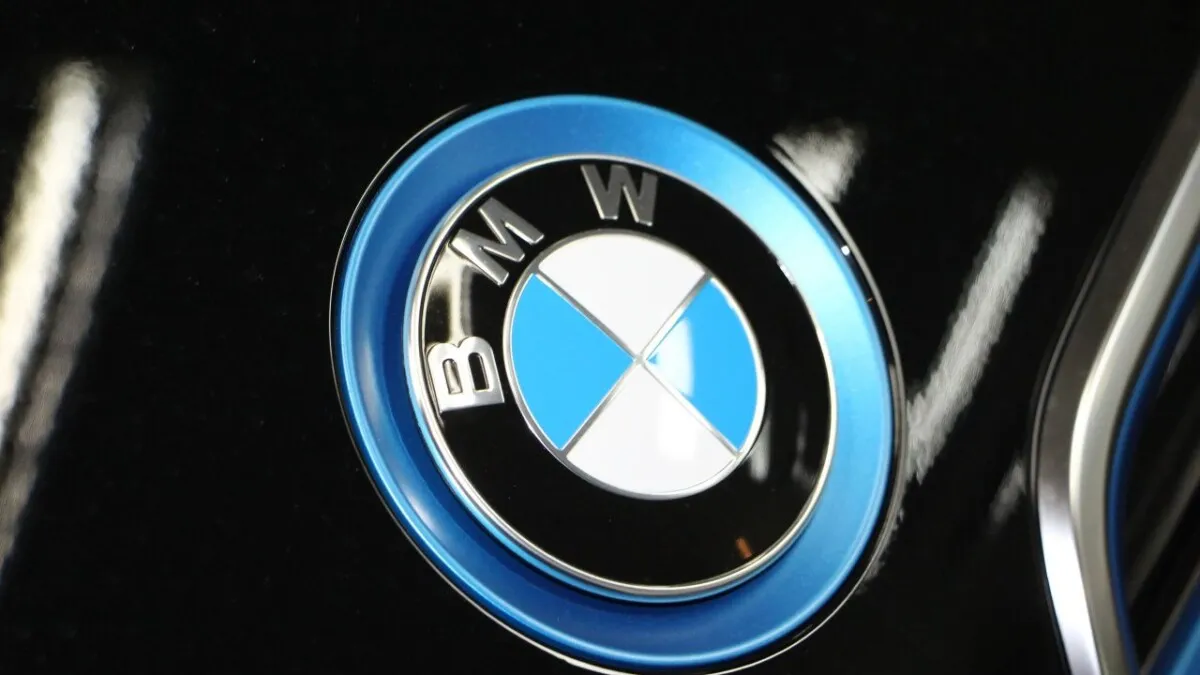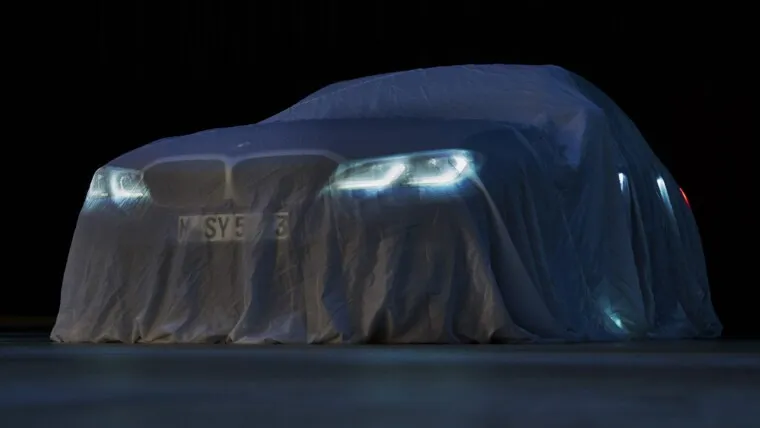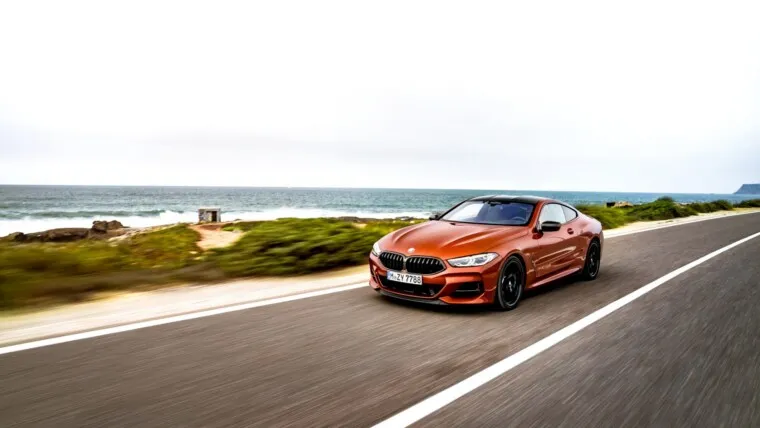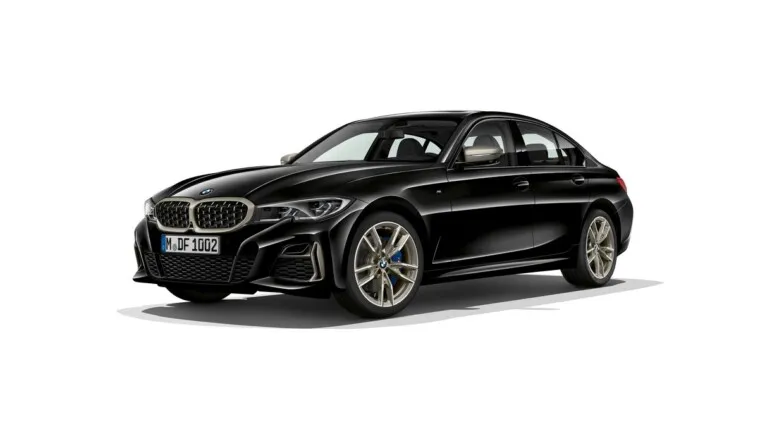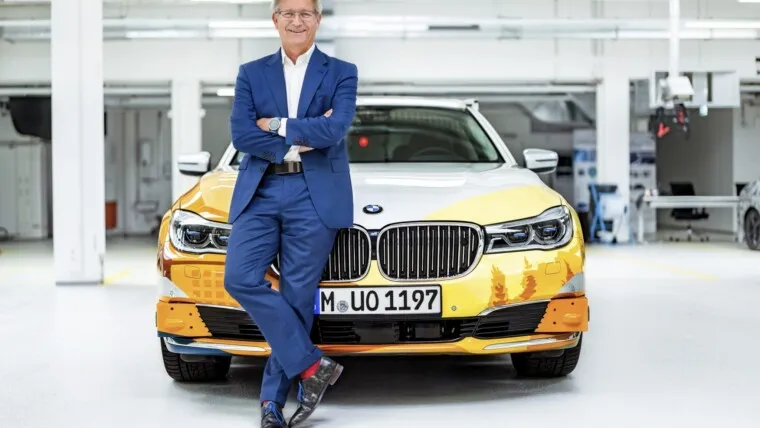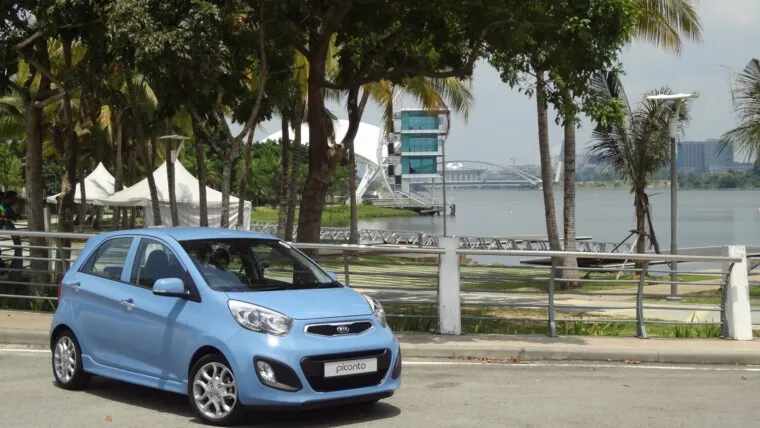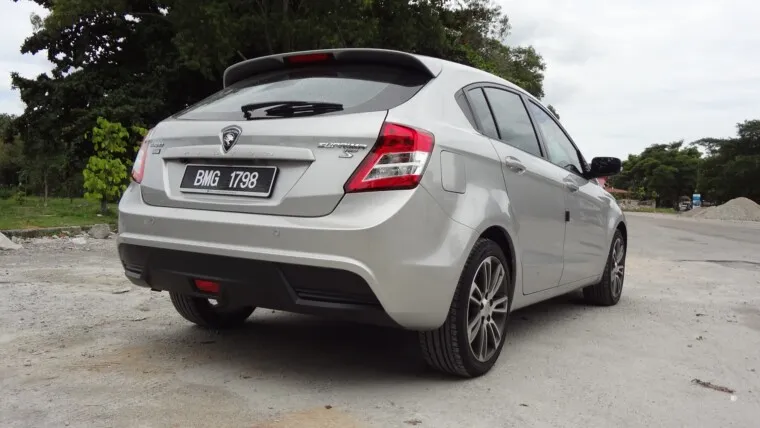If you recall very recently, we spotted the BMW i3 electric car at the company’s basement parking lot, just about to get a car wash, and posted the images on our official AF Facebook page. It garnered a lot of attention.
Although public interest of the BMW i3 overall has been extremely overwhelming, BMW Malaysia has clarified that the BMW i3 will not be launched in our local market in the near future, and that the i3 we saw earlier was for the company’s regional training program for the Asia Pacific Region, where the i3 will be marketed.
However, just to quench our curiosity, BMW Malaysia planned a short test drive for us to have a feel of what it’s like to be behind the wheel of the i3.
The i3 is the first battery-powered series production BMW introduced under the automaker’s new “i” sub-brand. The i3 as pictured above comes with a short front hood painted glossy black, another design element that sets-off the BMW ‘i’ range of electric cars from their petrol brethren in the line-up.
The i3 is a car that was built from scratch and it took a lengthy research effort for it to become a reality. The interior and exterior of the i3 is made of high quality renewable raw materials. Among the design features, certain parts of the instrument panel and door panels are made using southern Asia’s Kenaf plant natural fibres to save about 10% weight, while the interior leather is tanned using a natural process that uses olive leaf extract to provide protection against fading and wear. The roof is made of carbon fibre scraps to help recycle left over material from other parts. Suffice it to say, the build structure of i3 is in another league because none of its materials especially the interior are not available in other BMW cars but also any other car companies.
What really intrigued us the most were its skinny wheels – 5-inches wide but 19-inches in diameter. BMW explained that the purpose of this is for excellent aerodynamics and low rolling resistance. We are not sure if it would cause any shortage of actual grip but it does allow for a better turning circle and easier manoeuvrability, while the cars’ short front and rear overhangs make parking in tight spots much easier. It also benefits from rear wheel drive too. Despite its compact size, the i3 is actually a four-seater but unlike any other conventional vehicles, i3’s rear doors can only be opened from the front to ensure the safety of its back passengers.
Once settled into the driver’s seat, I notice that the car felt surprisingly spacious due to the omission of the central tunnel, allowing for an open connection between the footwells on the right- and left-hand side of the car. The gear selector that marks D, N and R and start/stop button is located behind the steering wheel.
Driving the i3 is nothing like piloting a rocket, it’s really simple; all you’ll have to do is to switch the lever to D, floor the accelerator and the i3 will respond immediately. However, unlike normal vehicles, the i3 has a one pedal feel meaning once you lift-off the pedal, the tyres will stop rolling and slow down almost to a complete stop even before you have the chance to hit the brakes.
According to BMW, when the driver lifts-off the throttle, the motor acts as a generator and converts the kinetic energy into electricity, which is fed back into the battery for a range gain. This regeneration is speed-sensitive, which means the car “coasts” for added efficiency at high speeds, and generates a strong braking effect at lower speeds. Hence, not only will you be saving fuel, the i3 also reduces your maintenance costs.
The production BMW i3 uses a 22-kilowatt-hour lithium-ion battery pack that produces 170hp via an electric motor and 250Nm of torque. It is connected to a single-speed transmission that’s propels the car from 0-50 km/h in 3.5 seconds, 0-100 km/h in approximately 7.2 seconds, and to an electronically limited top speed of 150 km/h. The battery sits on the lowest centre of gravity and it is protected against its rigid carbon fibre structure.
One of the i3’s party trick is that this car can detect an available parking spot and parallel parks itself without the driver having to hold the steering wheel – while it’s nothing new, it’s a pretty neat technology that made the i3 drive much more entertaining! Apart from that, the cabin noise is hardly noticeable, especially when in full-electric mode.
Although we won’t be able to see this car on our local roads any time soon, getting the chance to know the cute little future car was a treat, as this could possibly one of the best solution for zero emission future mobility.
BMW Malaysia addresses the issue of not being able to bring the i3 Malaysia at the moment is due to the insufficient infrastructure available in our country and due to poor demand for such vehicles in the Malaysia.
Plus, the latest National Automotive Policy states that only locally assembled electric and hybrid vehicle are applicable for tax exemptions. With no tax relief, the BMW i3 will have to bare with higher import and excise duties hence the car would not be able to justify its own price tag.
The possibility of a locally assembled i3 is also a far cry from reality as sustainability plays a vital role in the production of the i3. For instance, the electricity needed for production of the BMW i3 at the Leipzig plant is generated from hydroelectric power, making it entirely CO2-free. In addition to its CO2-free electricity supply, the plant also uses 50% less energy and 70% less water than the average for the already highly-efficient BMW production network.
Could the i3 and all other electric cars really be the future of sustainable mobility, well we think so, now if only we could get that infrastructure in place. We’ll keep you posted! In the meantime, check out this article on what’s going to be required if we ever want to have electric cars as daily transport, in terms of infrastructure.

